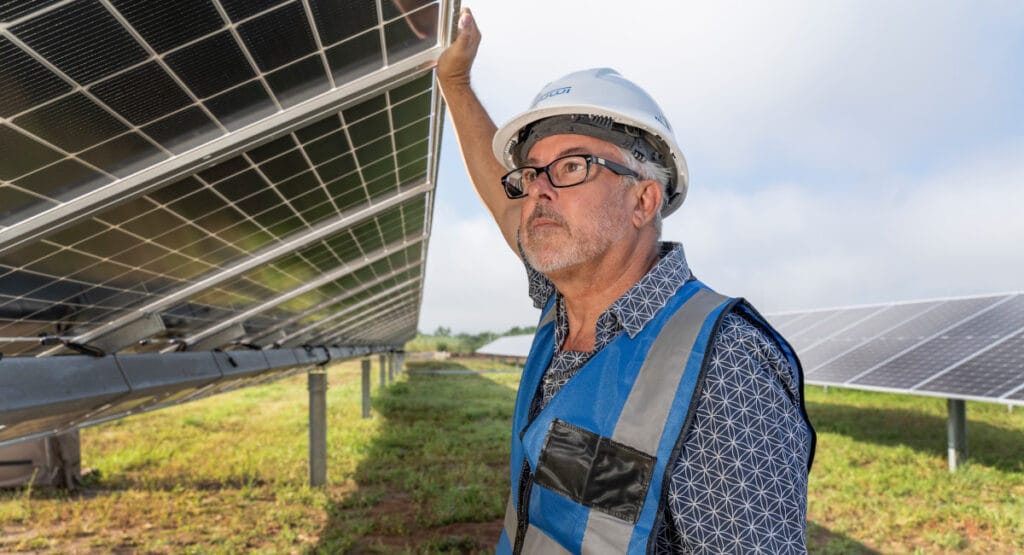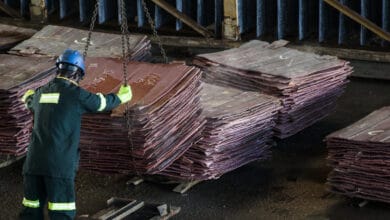- ◆ Nicola Cencelli (JUWI South Africa)
- ◆ Kobus Breytenbach (Assayline)
Across Africa, mining companies and Large Power Users (LPUs) are racing to secure affordable, reliable power. Grid instability, high electricity tariffs and decarbonisation aspirations have put pressure on mines to adopt renewables, either through on-site power generation or wheeling over the grid network. In South Africa alone, mines and LPUs have registered gigawatts of renewable projects, mostly solar PV, already cutting operational costs by between 20% – 30% compared with grid or diesel supply. Renewable power adoption is set to expand even further, with Standard Bank projecting that LPUs could eventually consume up to 70% of all renewable energy generated by independent power producers in the country, a total capacity of 15.8 GW.
Originally driven by cost reduction and decarbonisation goals, the business case for renewables has evolved with the declining battery costs. BESS enhances grid stability through voltage and frequency control and enables peak shifting, allowing PV penetration to exceed 20% even under a flat demand scenario. Lithium-ion battery prices have dropped over 80% in a decade, reaching around US$115/kWh in 2024, with further projections down to US$80/kWh by 2026 (BloombergNEF, Goldman Sachs). Storage is now a logical complement to solar, offering mines the ability to make use of cheap solar energy generated at midday during high-tariff peak periods, and to keep operations running through grid volatility. Previously such solar-plus-BESS solutions would only have been considered at remote or grid-constrained sites; however, the economics of BESS have opened up the potential to exploit the technology at grid-supplied LPUs, as well.
The hybrid system for Sukari Gold Mine in Egypt, designed, built and operated by JUWI, provides a great example of what is possible. The 36 MWp solar plant, paired with 7.5 MWh of storage has cut the mine’s diesel use by around 22 million litres annually. That equates to savings of about US$20 million annually while avoiding 60,000 tonnes of CO₂ emissions. Furthermore, the hybrid system has brought power stability to a remote off-grid site, showing how solar and storage can work together to displace thermal generation and build a cleaner, more resilient future for mining.
Yet our experience shows that batteries are not plug-and-play. Hybrid projects bring a new layer of complexity that, if underestimated, can jeopardise the power stability and energy flow within the mine’s internal reticulation network.
Battery specifications must be carefully aligned to a customer’s daily and annual load profile to determine sizing and duration of storage. In South Africa, frequent load-shedding often prompts customers to request islanding capability so operations can continue during grid outages. However, this is not as simple as flipping a switch. Most PV-plus-BESS systems are designed to ride through short grid interruptions or maintain critical loads, not to operate fully islanded for long periods. True islanding, i.e. running a whole site as a standalone microgrid, adds cost and complexity. Once a site separates from the grid, the BESS must not only supply energy but also recreate the grid’s stability functions – voltage control, frequency, and system inertia – which a grid system inherently provides. For most customers, a selective or “partial island” configuration for critical loads is far more practical.
Grid code compliance presents another challenge, particularly in South Africa, where the Renewable Power Plants Grid Connection Code sets stricter requirements than the Distribution Code. Generators must actively support grid stability during normal and abnormal conditions. Fortunately, grid code compliance is aided by the inclusion of BESS. Some owners of behind-the-meter generation facilities are no longer opting for the net metering option owing to the limited commercial benefit which is capped at the electricity account linked to the operation and the opportunity to charge BESS with additional energy. Depending on the design and unique site and connection regime, the benefits of having a zero-export regime may further simplify the grid connection and reduce grid connection costs.
Environmental realities add further complexity. Unstable ground on previously mined land can lead to costly civil works, while dust and heat can impair cooling systems and accelerate equipment wear. In some cases, heavy rainfall or poor drainage on rehabilitated land has caused unexpected erosion or flooding around installations.

Hybrid systems also require ongoing attention. Continuous monitoring, data analysis and skilled operational support are essential to detect and address issues early. Warranty compliance cannot be an afterthought, neglecting these obligations can void guarantees, shorten asset lifetimes, and expose mines to significant unplanned costs.
As the technology matures, financing models are also evolving. Encouragingly, shareholders are recognising the value of solar plus storage. Payback periods are shortening, and lender confidence in BESS technology has grown significantly as more plants demonstrate operational savings and reliability. BESS is now increasingly seen as bankable when paired with solar, particularly where it displaces diesel or provides measurable resilience benefits.
Where previously mines would outsource the full renewables project to an independent power producer, and procure energy on a per kWh basis, they’re now seeing the rewards of investing their own capital. Following an engineering, procurement, construction and management (EPCM) approach allows mines to contract directly with an expert entity that provides the engineering, the early works structuring and feasibility support, followed by procurement management and contract oversight for construction. Though the EPCM approach introduces more risk for the mine, in terms of direct contracting with suppliers, the approach provides direct control and subsequent cost advantages for the mine.
For Africa’s mines, BESS now offers techno-commercial advantage in many cases rather than an optional add-on. It is becoming essential to managing energy costs, minimising power disruptions, and meeting decarbonisation goals. However, the value of storage is only realised when projects are designed and maintained with the realities of mining in mind. Mines that get solar and battery storage right will secure a decisive advantage in Africa’s energy transition.









